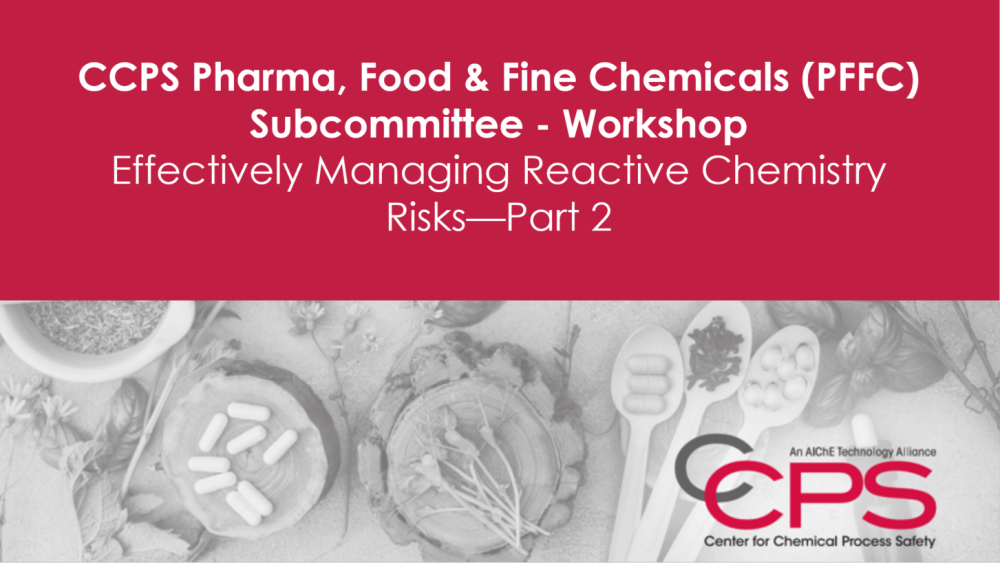Login to see members-only documents at the end of this page (e.g., meeting agenda, meeting slide, and documents, etc.).
Note: This workshop registration is by invitation only
Workshop Theme: Effectively Managing Reactive Chemistry Risks
Multidisciplinary product/Process R&D and Manufacturing Process Design Teams dealing with chemical synthesis processes face many challenges related to process chemistry, process economics, process design/safety, schedule, and product market uncertainty on the road to commercializing chemical products (individual chemical or polymer entities or formulated products).
Presenters in this session will continue to address questions concerning inherently safer design (how to Minimize, Moderate, Substitute & Simplify the process) and to answer some of the 20 questions listed in the table at the end of this flyer for managing Reactive Chemistries to ensure that chemical research & development/process design/ manufacturing teams involved with chemical synthesis processes:
- Ask the RIGHT Questions at the RIGHT TIMES,
- Have the RIGHT data to answer the questions,
- Have the RIGHT people with the appropriate competencies to analyze/interpret/use the data for making good risk decisions.
Agenda
- Pharma/Food/Fine Chemicals Subcommittee—Welcome & General Announcements
-
A Process Safety Moment (4min) Bruce Bullough, CCPSC Pfizer, Session Moderator
-
Introduction of Reactive Chemistry Topics to Be Addressed at This Session & Proposed Future Topics (4 min) Jerry L Jones, PE, Session Moderator
- Presentation #3-1a & 3.1b:
- Overview of CCPS Tools for Evaluating Reactive Chemistry Hazards — Reactive Chemicals Worksheet (15 min)
- Dennis Hendershot PE
- Risk Analysis Screening Tool (RAST) & Chemical Hazard Engr. Fundamentals (CHEF) (55 min)
- Bruce Vaughen PhD and Ken First
- Overview of CCPS Tools for Evaluating Reactive Chemistry Hazards — Reactive Chemicals Worksheet (15 min)
- Presentation #3-2:
- Taming tetrazoles: how to develop robust processes safely. The example of VT-1161. (40 min)
- Dr. Jan Haller, R&D chemist, Axplora, Leverkusen site, Germany (presenter)
- Oliver Plietzsch, PhD, Head of R&D process development, Axplora, Leverkusen site, Germany
- Taming tetrazoles: how to develop robust processes safely. The example of VT-1161. (40 min)
Abstract:
The demand for active substances for pharmaceutical and agrochemical applications is constantly increasing. Many chemical structures, used in innovative active ingredients, may be successfully synthesized with hazardous raw materials or process steps using hazardous chemistry. Although such reactions require specialized equipment, trained employees and precautions during development and manufacturing, they can have significant advantages in terms of efficiency, costs or even sustainability. To develop safe and robust commercial production processes, using hazardous chemistry, it is crucial to assess and manage the risks and hazards. An example of such a structured approach is shown for the development and manufacturing of VT-1161.
We will speak about hazardous chemistry in the development of commercial scale processes to manufacture APIs. We will focus on managing the risks of hazardous chemistry in order to develop safe and efficient processes on commercial scale. Based on a commercial active pharmaceutical ingredient – Oteseconazole/VT-1161 – we will walk you through the project phases from development, scale-up to commercial manufacturing

